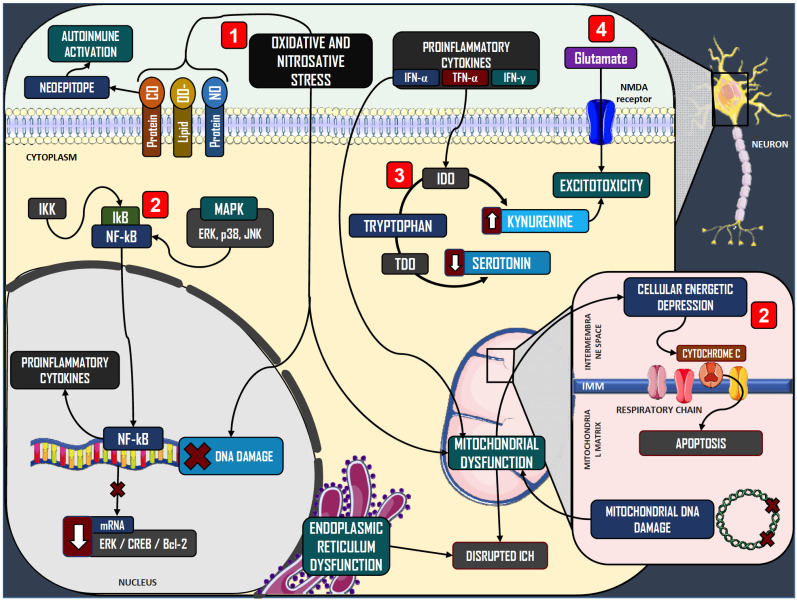Fig. (2).
Molecular events associated with chronic inflammation in neurons. In neurons, chronic inflammation is associated with four major pathophysiologic components: 1) Increased oxidative and nitrosative stress, which is associated with protein carbonylation and nitrosylation as well as lipid peroxidation, which results in formation of neoepitopes and favors autoimmunity. Oxidative stress and nitrosative stress also damages nuclear DNA and induces mitochondrial dysfunction. 2) Activation of stress-related intracellular signaling pathways, which promote apoptosis and disruptions in intracellular calcium homeostasis, worsen inflammation and oxidative stress, and impair neurotrophic signals. 3) Disruptions in monoamine metabolism, through activation of IDO, leading to kynurenine synthesis, which decreases serotonin availability and promotes excitotoxicity. 4) Excitotoxicity, promoted by kynurenine, disrupted calcium metabolism, and increased glutamate signaling from glial cells. Abbreviations: Protein-CO: Protein carbonylation. Protein-NO: Protein nitrosylation. Lipid-OO-: Lipid peroxidation. IKK: I kappa B Kinase. IkB: inhibitor kB protein. NFkB: Nuclear factor kappa B. MAPK: Mitogen-activated protein kinases. ERK: Extracellular signal-regulated kinase. JNK: Jun N-terminal kinase. CREB: Cyclic AMP responsive element binding protein. Bcl-2: B-cell lymphoma-2. IDO: Indoleamine 2,3-dioxygenase. TDO: Tryptophan 2,3-dioxygenase. ICH: Intracellular calcium homeostasis. IMM: Internal mitochondrial membrane. (A higher resolution / colour version of this figure is available in the electronic copy of the article).

